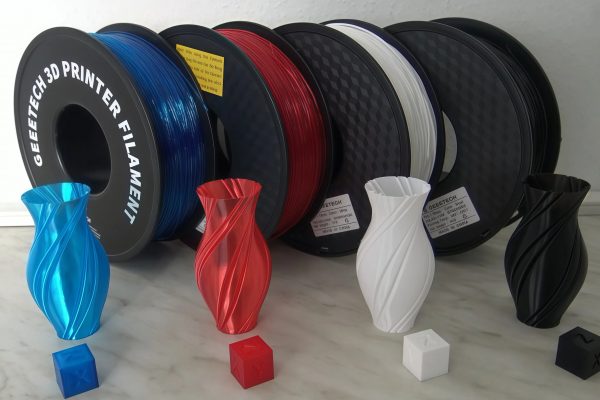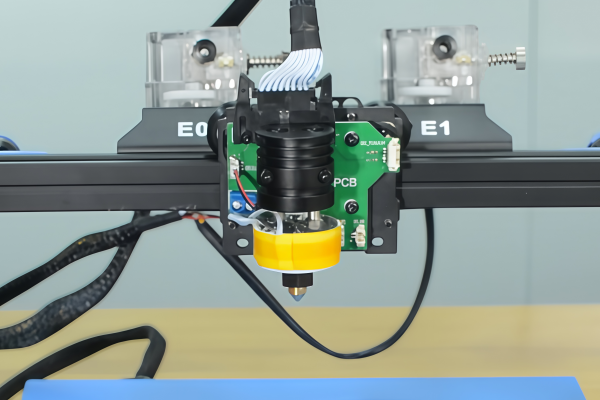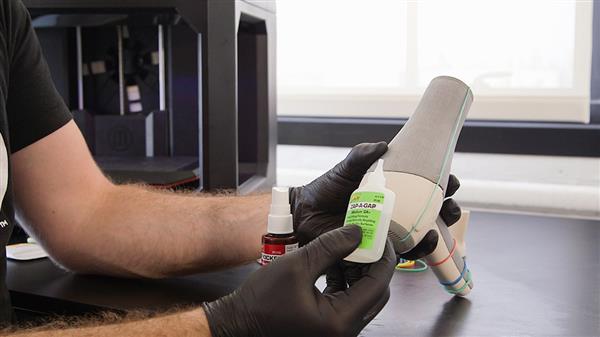Whether you’re a beginner, professional, or simply a 3D printing enthusiast, the most important thing to know – other than how to work the machine of course – is how to protect and store your 3D printing filament properly.
What happens when you don’t store your filament correctly?

They absorb moisture from the air, which degrades its quality over time, causing failed prints, sputtering, and nozzle blockages.
An economical solution for this problem that will save you time and money is protecting your filament investment with the help of these easy DIY bags to keep out moisture. You can follow the steps below to make your own.
Step 1: Supplies
- Bag of 20 – 30* silica get desiccant packs
- Box of good quality gallon plastic storage bags
- Permanent marker
- Duct tape
Use 2 silica gel packets for every roll of filament – so the number of rolls you have to store will determine how many gel packs you need.
What we’ll be making is a simple, dehumidified environment for each roll to live in. One plastic storage bag and two silica packs per roll are all that’s needed to give the filament a very healthy, long life.
Step 2: Date the Roll & Bag
The rule of “lifespan” thumb for a roll of PLA or ABS filament is 12 months (check with the manufacturer for other types). You can also date the 3D printer filament storage bag if you’d like.
Step 3: Reinforce the Bags
- Cut two 3″ pieces of duct tape.
- Stick one (in half) to each top side of a one-gallon plastic storage bag.
This is important to do because the sides of the bags can easily split over time as you take the filament roll in and out. It strengthens those weak points and gives a longer shelf life.
Step 4: Load the Bags
- Next, load a roll of the filament into the bag.
- Add two silica gel packs to the bag.
- Seal the bag, making sure that it’s properly closed the entire way.
NOTE: Stop an inch short of sealing it and press out as much air as you can before sealing it all the way!
The only thing left to do is to stack your safely stored rolls in their designated home!
And that’s the solution to a potentially expensive problem.

Indeed there are other ways of protecting your rolls that work well, like vacuum-sealed bags and plastic bins with larger desiccant packs, but both those solutions take up more space and require an extra step each time you use a roll, and the bin is larger and harder to hide away.
Storing your filaments in an individual not only protects them but also allows you to organize them as you please. If you are comparing which brand of filament is one of the best 3d printer filament, and also you are looking for some new colors for your next new project, welcome to visit our website. For further filament storage tips, welcome to leave your comments here to discuss.






